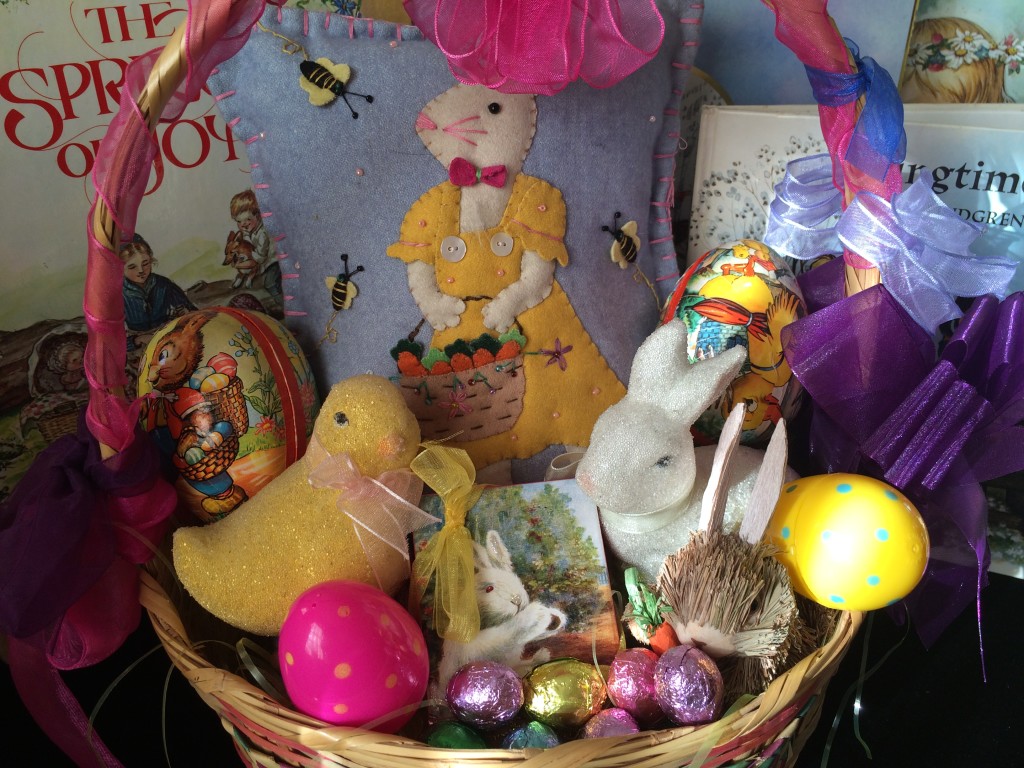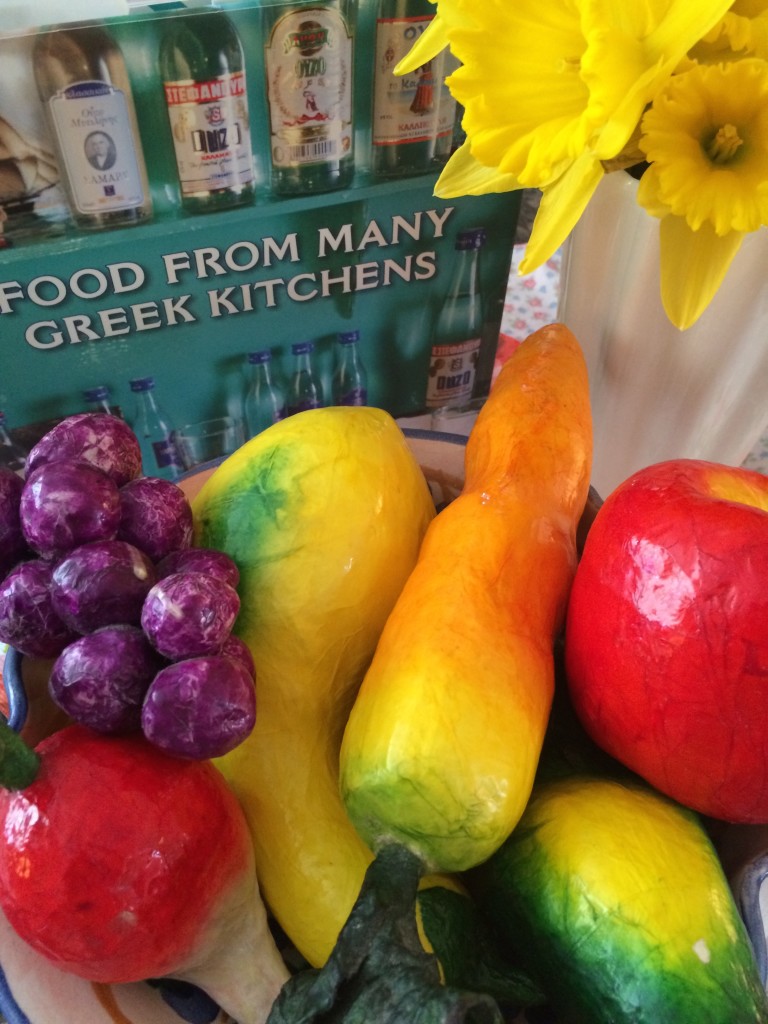 This Easter season, we reflect on why traditions matter, offer both “old” and new delicious Spring recipes, and feature ATG’s pick of some of the most famous and unique Easter traditions from around the world, below:
This Easter season, we reflect on why traditions matter, offer both “old” and new delicious Spring recipes, and feature ATG’s pick of some of the most famous and unique Easter traditions from around the world, below:
“Tradition, symbolism and religion lie at the heart of Easter. It is the most important festival in the Christian year, marking the death of Christ on Good Friday and celebrating his resurrection three days later on Easter Sunday. As a movable feast, Easter follows the lunar calendar – it falls on the first Sunday after the first full moon of the Spring Equinox. It is believed to derive from the Anglo-Saxon festival Eostre, which honored Eastre, the goddess of spring and dawn…” –Pippa Middleton, from her book, Celebrate: A Year of Festivities for Family and Friends (see below)
1. GERMANY: Frohe Ostern!
Most interesting Easter tradition: Sommertagszug or “the summer day parade”
This parade takes place three weeks before Easter on Laetare Sunday (also known as mid-Lent) in the southwest provinces of Germany. It is intended to welcome the summer season and bid winter adieu.
The parade includes a Zug (train parade) full of kids dressed as little ducklings, with yellow rain jackets and ducks’ heads as hats, holding pretzels placed at the tip of sticks, which are decorated with ribbons and have an egg in the middle.
Also featured is a snowman representing “old winter” standing on a dried tree made of straw next to a green tree decorated with colored eggs and wreathes to represent Spring and Summer. At the end of the parade, the winter tree and snowman are burned and everyone sings “Der Sommertag ist da” (summer is here)!
Fun Facts:
- The Easter Bunny or “Oschter Haws” (Easter Hare), symbolizing fertility, was first mentioned in German writings in the 16th century
- The legend of the Easter Bunny delivering a basket of eggs is thought to have been brought to the U.S. by settlers from Southwest Germany who migrated to America in the 1700s
- Around 1800, the first edible Easter bunnies were made in Germany
2. ITALY: Buona Pasqua!
Most interesting Easter tradition: Scoppio del Carro or “Explosion of the Cart”
This Italian folk tradition features a large, decorated wagon that is dragged through Florence on Easter Sunday by white oxen decorated with garlands of the first flowers of spring, surrounded by a parade of around 150 soldiers, musicians, and people dressed in 15th century clothing. Following Mass, in the Basilica di Santa Maria del Fiore in Florence’s historical center, the Archbishop sends a dove-shaped rocket into the cart, igniting the fireworks that lay within. The “explosion of the cart” is said to guarantee a good harvest, stable civic life and good business.
Fun facts:
- Via Crucis or “Stations of the Cross” is a very well known tradition throughout the Catholic world and is most popular during Lent; on Good Friday the Pope leads thousands from the Colosseeum to the Temple of Venus in the Roman Forum with a large cross and burning torches as the “stations of the cross” are described in several languages
- Easter in Italy is mainly celebrated through religious processions and festivals all throughout the country, including small towns; the largest and most popular mass in Italy is held by the Pope at Saint Peter’s Basilica in Vatican City, Rome
- The oldest Good Friday procession in Italy is in Chieti (located in the Abruzzo region of Italy) and features 100 violinists playing Selecchi’s Miserere
3. GREECE: Kaló Páscha!
Most interesting Easter tradition: Pot Throwing on Corfu
 On the morning of Holy Saturday on the Greek Island of Corfu, people throw pots, pans and other earthenware out of their windows, smashing them on the pavement below. Some say this custom derives from the Venetians, who on New Year’s Day used to throw out all of their old items to get rid of the old and welcome the new, while others believe the throwing of the pots welcomes spring and symbolizes the harvesting of new crops. It is also thought that this particular custom has its roots in the biblical passage: “Thou, O Lord, raise me up, that I may crush them as a potter’s vessel.” (Psalm 2:9).
On the morning of Holy Saturday on the Greek Island of Corfu, people throw pots, pans and other earthenware out of their windows, smashing them on the pavement below. Some say this custom derives from the Venetians, who on New Year’s Day used to throw out all of their old items to get rid of the old and welcome the new, while others believe the throwing of the pots welcomes spring and symbolizes the harvesting of new crops. It is also thought that this particular custom has its roots in the biblical passage: “Thou, O Lord, raise me up, that I may crush them as a potter’s vessel.” (Psalm 2:9).
Fun facts:
- “Pascha” or “Easter” is the most celebrated feast in Greek culture and is the most important religious holiday of the Orthodox Church
- For Greek Orthodox Christians, the egg symbolizes the empty tomb from which Jesus Christ arose after his crucifixion
- Greeks mainly dye their eggs red to signify the blood of Christ; they typically paint them on Holy Thursday, and sometimes bake them into twisted sweet-bread loaves (tsoureki)
4. NORWAY: God Påske!
Most interesting Easter tradition: Paaskekrimmen or “Easter Thrillers”
In Norway during Easter, it is popular to read crime novels that publishers come out with specifically for the season – known as “Paaskekrimmen” or “Easter Thrillers.” The tradition is said to have started in 1923 when a book publisher promoted its new crime novel on the front pages of newspapers (“Bergen Train Looted in the Night”), which people didn’t know was not real “news.” Today, nearly every TV channel and radio show produces a crime miniseries for Easter and milk companies print crime stories/brain teasers on their cartons.
Fun Facts:
- Norway has the world’s longest Easter holiday celebration, extending from “Carnival” which is from Sunday-Tuesday before the fast season through “Easter Monday”, the day after Easter which is used to clean or return home from a trip
- Schools are usually closed for the entire week preceding Easter
- Some Norwegians celebrate Easter by going up to the mountains to enjoy sunshine and skiing, developing “Pâskesol” or “Easter brown” from spending a long day outdoors
5. FINLAND: Hyvää Pääsiäistä!
Most interesting Easter tradition: Virpominen or Witches & Bonfires
In this Scandinavian country, on Palm Sunday, children dress up in old and oversized clothes with headscarves and paint freckles and rosy cheeks on their faces. Carrying broomsticks, coffeepots and willow twigs, they go begging in the streets, knocking on doors and asking people to put candy or money in their pots in exchange for one of their decorated twigs. Most children recite a rhyme at the door: “I wave a twig, for a fresh and healthy year ahead; a twig for you, a reward for me!”
This tradition stems from the belief that the flames ward off witches who fly around on brooms between Good Friday and Easter Sunday. Accordingly, many communities also hold bonfires to ward off the evil spirits.
6. ENGLAND: Happy Easter!
Most interesting Easter tradition: “Pancake Tuesday”
 On Shrove Tuesday (later known as “Pancake Tuesday”), which is the day before lent, pancake races are held in towns across the UK, where participants run while flipping pancakes. The tradition is said to have originated in the small English town, Olney. Read a little bit more about the history of Pancake Tuesday.
On Shrove Tuesday (later known as “Pancake Tuesday”), which is the day before lent, pancake races are held in towns across the UK, where participants run while flipping pancakes. The tradition is said to have originated in the small English town, Olney. Read a little bit more about the history of Pancake Tuesday.
Fun facts:
- Morris Dance is most popular in England during Easter; it has been practiced since the 15th century and involves professional male troupes with white suits, belts and sticks; it is meant to frighten away the evil spirits of winter
- Since the Middle Ages, Christians in the UK and the Republic of Ireland have been serving Simnel Cake on the middle Sunday of Lent (when fast is broken)
- Residents in Dunstable, Bedfordshire roll oranges down the steep slopes of Pascombe Pit every Good Friday
And so we ask you: What are some of YOUR favorite Easter traditions?